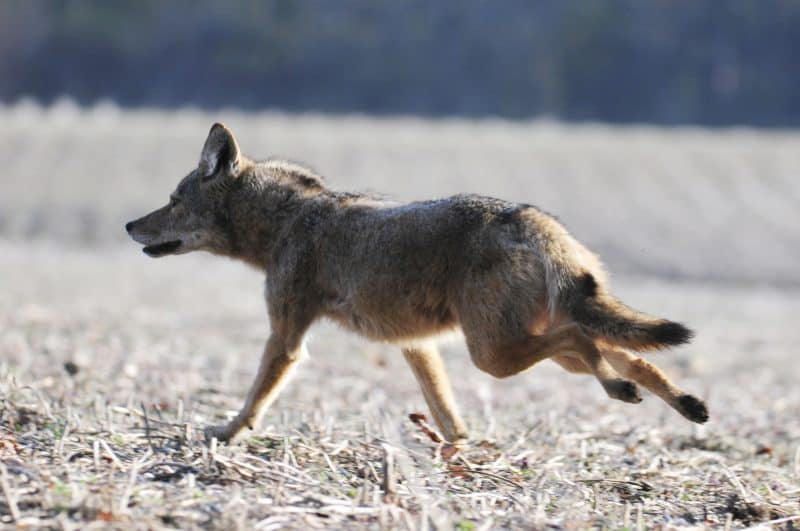Wildlife
Wildlife in Marion County encompasses a vast variety of discussion topics. We have in our county endangered species of mussels, and over populations of geese. Some residents are concerned about hazards from deer and coyote in their neighborhoods. We have groups of bird watchers, nature groups interested in protecting mammals, insects, bats and aquatic life. We have hunters and fishermen, and children who are interested in studying it all. Wildlife of all types play an important role in the ecology of our county.
The Marion County Soil and Water Conservation District has historically included the needs of wildlife in our conservation plans. Below you will find information and websites to help you with your wildlife concerns.
Managing Human-Deer Conflicts in Urban Areas
The impact of white-tailed deer within urban communities is a growing problem nationwide, including in several Indiana communities. Managing the problem can become controversial. Overabundant deer can impact deer-human interaction, cause ecological damage, and present health issues for humans.
The Association of Fish ad Wildlife Agencies has created “Methods for Managing Human–Deer Conflicts in Urban,
Suburban, and Exurban Areas” to help urban communities find solutions for managing deer populations in their cities and towns.
The Indiana Department of Natural Resources also has helpful information on deer management on their website. Click Here.
How to deal with nuisance Canada Geese
If Canada geese have become a problem on your property, information is available through the Indiana Department of Natural Resources website. Most goose problems occur from March through June, during the nesting season, when geese are especially aggressive, sometimes attacking and nipping at people. Geese also can cause a great deal of localized damage if many young are hatched in one area. After hatching, goslings are incapable of flight for about 70 days, so the young birds and their parents will graze near the hatching area for that time. Damage to landscaping can be significant and expensive to repair or replace, while large amounts of excrement can render areas unfit for human use.
Information on actions property owners can take to manage Canada geese is available here. Solutions range from habitat modification, to daily goose harassment through noisemaking devices, to supporting goose hunting or obtaining a DNR trapping permit. The U.S. Fish & Wildlife Service also allows landowners who are properly registered to destroy resident Canada goose eggs and nests on their property. More information on registering for federal permission to destroy eggs and nests here. It is against federal law for anyone to destroy a Canada goose nest that contains one or more eggs without first securing permission through the U.S. Fish & Wildlife Service. It’s best to use preventive measures such as habitat modification before geese become a nuisance.
Coyotes adjust to landscape, including urban areas
Personal experiences shape our attitudes toward most wildlife. This is especially true for coyotes. Thoughts range from worthless varmint that should be removed completely to a beautiful creature deserving of protection. Urban conflicts are focused on attacks on pets, concerns for safety, and fear of the unknown.
Coyotes are a native species once limited to the prairie regions of western Indiana. Reports of coyotes in Indiana began to increase in the 1970s. They have adjusted to the landscape changes and now are common in all Indiana counties, including many urban areas. For some Hoosiers, this is old news. For others, the sight of a coyote is new and little is known about how to live with this species. The DNR has a full list of tips to minimize conflicts with coyotes.

Photo courtesy of Indiana Department of Natural Resources, Fish & Wildlife Division
Prevention and control in urban areas – coyotes
- Feed pets indoors whenever possible; pick up leftovers if feeding outdoors and store pet and livestock feed where it’s inaccessible to wildlife
- Eliminate water bowls and other artificial water sources (if possible).
- Position bird feeders in a location that is less likely to attract small animals or bring the feeders in at night (to keep coyotes from feeding on the bird food or the other animals).
- Do not discard edible garbage where coyotes can get to it. Secure garbage containers
- Trim and clean shrubbery near ground level to reduce hiding cover for coyotes or their prey
- Do not allow pets to run free and provide secure nighttime housing for them
- If you start seeing coyotes around your home, discourage them by shouting, making loud noises or throwing rocks but NEVER corner a coyote – always give the coyote a free escape route.
The DNR Division of Fish & Wildlife manages trapping and hunting seasons for coyotes (Oct. 15 through March 15, 2015). The seasons are not meant to remove every animal, but they do provide a good, low-cost way to manage coyotes while giving hunters and trappers opportunities to pursue coyotes.
Coyotes also can be taken outside of these seasons on private land. Landowners may remove a coyote at any time on land they own, or they can provide written permission for others to take coyotes on that land at any time without a permit. This gives landowners the ability to control what happens on their property, even outside of established hunting and trapping seasons.
Handbook on rodent control:
Websites & resources for wildlife assistance
- Landowner Habitat Assistance from IDNR
- Nuisance Wildlife Assistance from IDNR
- IDNR Licensed Nuisance Wildlife Control Operators
- A video that explains what to do when finding an injured or orphaned wild animal
- IDNR Education Programs
- USDA – Natural Resource Conservation Service – Wildlife
- USDA – NRCS Informational Job Sheets pertaining to wildlife
- Indiana Wildlife Federation
- National Wildlife Federation
